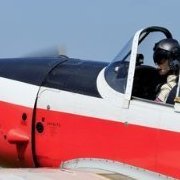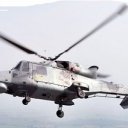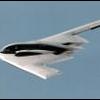-
Posts
2,002 -
Joined
-
Last visited
-
Days Won
1
Paul Thompson's Achievements

Very Obsessed Member (5/9)
3k
Reputation
-
Paul Thompson started following Pink tires on WW1 German aircraft? , Morane Saulnier Type L Parasol , modelsforsale website access and 3 others
-
Usual thing in general was to dismount the wings and either pack them beside the fuselage on a lorry drawn trailer, or a train. There's a diorama build on here based on an old Airfix Magazine article which should give you some ideas. The specific aircraft on that one is a scratchbuilt Sopwith Gunbus, but the principle is the same. Worth looking at I have the Windsock Datafile on the Morane L but there are no photos of dismantled airframes I'm afraid. I've also checked for pictures of the Pfalz A1 knockoff, and other Moranes. Plenty of photos of Albatrosses and the like being transported, but sad lack of Moranes. Odd. I'd really see it only as a last resort though. I've done one in 1/48th and it was easier than a biplane, My approach was to add the struts to the fuselage with Revell Contacta, which is faster than tube glue but slow enough to get the angles right. Then once the glue begins to set I eyeballed the struts into mostly the right position - they only slant in towards the top a bit, seen from the front, and are virtually perpendicular from the side. Once they're fairly stiff but not completely set, invert the fuselage and rest it on the wing with the struts in your pre-drilled holes. The only tricky parts are 1) making sure the strut locations are in the right place, and 2) propping the rear of the fuselage and obstructing it so it can't move sideways, forwards or backwards. Check it now and then a it dries in case it still manages to wiggle about. Then when the struts are firmly set pick up the fuselage for a final check, put a drop of glue in the wing holes, re-invert and leave to set. The forward slanting front struts can then be cut to length and fitted. You can use any old thing to stop movement, just paint pots or lego blocks, whatever you've got. But if you're the nervous type, then stick a piece of graph paper to a sheet of expanded polystyrene about 1 cm thick. Use 4 cocktail sticks around the edges of the wings to stop it moving about, and a few more to immobilise the fuselage once in place. Still need a suitable prop to keep the tail up though. If instead of plastic struts you intend to use brass, should you be lucky enough to have any Strutz left over or are the sort of weirdo who enjoys filing bits of brass rod, then of course you'll have to stick it with a rapid setting epoxy glue. You can do it with gel CA if you're very quick, but it's not an exercise for the faint of heart. But in 1/72nd the 'L' is a timorous wee beastie and doesn't really need the strength of brass. It's more a matter of if you can make or obtain plastic strut material that's thin enough to look okay. HTH. Paul.
-
Also, from their Ebay page, 'The seller is away until Wed, 02 Jul, 2025. Expect a delay in delivery until they return.'. Paul.
-

Humbrol spray varnish disaster! Help/advice please...
Paul Thompson replied to BikingLampy's topic in Paint
More reactive/able to do damage in a short time. I once sprayed a rattle can of Tamiya varnish over an Aeroclub Canberra, not realising it was a lacquer, and within a minute it had ate through enamel primer, injection plastic, vac plastic and Tamiya filler. The white metal parts were recoverable. Little else. But, lesson learned, so that's good. Paul. -
Well, you got me worried so I pulled a random Datafile of an early RFC machine of domestic manufacture, covering early BE types. The tyres look to me a mixture of medium to light grey, with perhaps a few you could call dark, but only in ambiguous photos due to lighting. In the context of the question I was responding to ('Would this also apply to RFC machines ?'), there's also the fact that many machines used by the RFC were French, although complicated further by some being partially obtained by licensed British manufacture. So as always, photos are essential if you want to be sure, any rule of thumb being sprinkled with so many caveats. Paul.
-
My kit arrived yesterday, and to me it looks like they have used the brighter blue and red. There is a note to that effect on the decal guide, as well as going halway by saying 'For filming purposes the code letters appeared to be painted in a paler shade of grey, possibly to show up on film more. Roundels appear to have been painted in the post-war 'bright' shades, perhaps for the same reasons'. The note continues to mention the painting of weatheringand exhaust stains. Paul.
-

1/48 - Supermarine Spitfire Tr.9 by Airfix - released
Paul Thompson replied to Homebee's topic in The Rumourmonger
Usually already do, since the local (Dunfermline) Halfords more often has no paint in than not, these days. Got into the habit of using Halfords' generically, naughty, I know. I do miss Appliance White though, the Hycote ones don't seem as robust. Paul. -

1/48 - Supermarine Spitfire Tr.9 by Airfix - released
Paul Thompson replied to Homebee's topic in The Rumourmonger
Killing time while I await delivery of mine. Plan A, a coat of Halfords plastic primer followed by a light sanding. Plan B, a second coat and sand. Shouldn't need a plan C. because I don't fling black ink (whether it's actually diry thinners or Mr Clean Up Dirty Thinners In A Bottle Don't Think Just Do It, or not) over my models. Paul. -
Everybodies, I think. Paul.
-
Pink is a thing with old tyres. You also see it on photos and museum examples of old bicycles. Rule of thumb is, the earlier in the war, or pre war, the lighter the tyre, as said above due to not yet having learned to add carbon black. I paint mine medium to dark grey, or very rarely light grey or greyish pink if it's pre 1915, or according to photos if I have that luxury. Paul.
-
I really wanted to build one, but only after the kit became rare at a decent price, given the trimming needed to get the interior in, which as I understand it is the only major problem with it. So I was overjoyed when one came up at Hannants in their second hand section for just a tenner a few years ago. Then it arrived, and turned out the fuselage was mostly AWOL. Fair played to Hannants though, they were suitably apologetic and gave an immediate refund, and I got to keep the bits, although what I'll use them for is yet to be determined. Maybe I can go completely loco and bash them with an old Airfix kit bwahahahahahaha. Paul.
-

KP 1/72nd Avro 504K, 'European Users'.
Paul Thompson replied to Paul Thompson's topic in Ready for Inspection - Aircraft
Tracking down the real A.III, I now want to do the F2b and Marinsyde you can see in the film linked in my wingey little post about the decals being way too small, which is knocking around Britmodeller somewhere. Paul. -

KP 1/72nd Avro 504K, 'European Users'.
Paul Thompson replied to Paul Thompson's topic in Ready for Inspection - Aircraft
Thanks, but you know how it is when you've just spent a lot of time on a subject - your own mistakes loom large in your mind, and anything you found out about the kit at odds with the real subject still flashes alarm bells. The only reason I keep banging on about KP errors is that most, if not all, could be avoided with minimal research (eg looking at a photo of an aeroplane and realising that the sides are not flat) and little modification to whoever's kit they use as a master for their own. I wouldn't mind if it cost a five more because it would then probably be a cracking little kit. My own errors, I'll probably forget in due course, an excuse I'll have to stick to. Wood effect is easy to do - Halfords grey plastic primer so the acrylic paint will stick, Humbrol 93 acrylic base colour, dry brushed with whatever brown is hanging around the desk, then a top coat of translucent clear to blend (currently favouring Citadel Seraphim Sepia although a mix of Tamiya clear orange and clear yellow does the job too). The film and photo I found of what is almost certainly the subject aeroplane doesn't show propellor laminations, so neither did I. Oh, forgot to mention, that's not the kit propellor, but it is a KP one (from the Sopwith Scooter IIRC, all of 6 weeks ago). Rigging is Albion Alloys 0.1 mm nickel silver. Brightness toned down with satin varnish, which works in real life although the photos pick up the flash too much. It'd look much better with thinner control cables but I don't have anything thinner currently - even fishing line looks thicker once coloured up, and the last few days I've had an attack of the shakes (periodic, nothing to worry about) which has detered me from stretching silver sprue. Paul.










